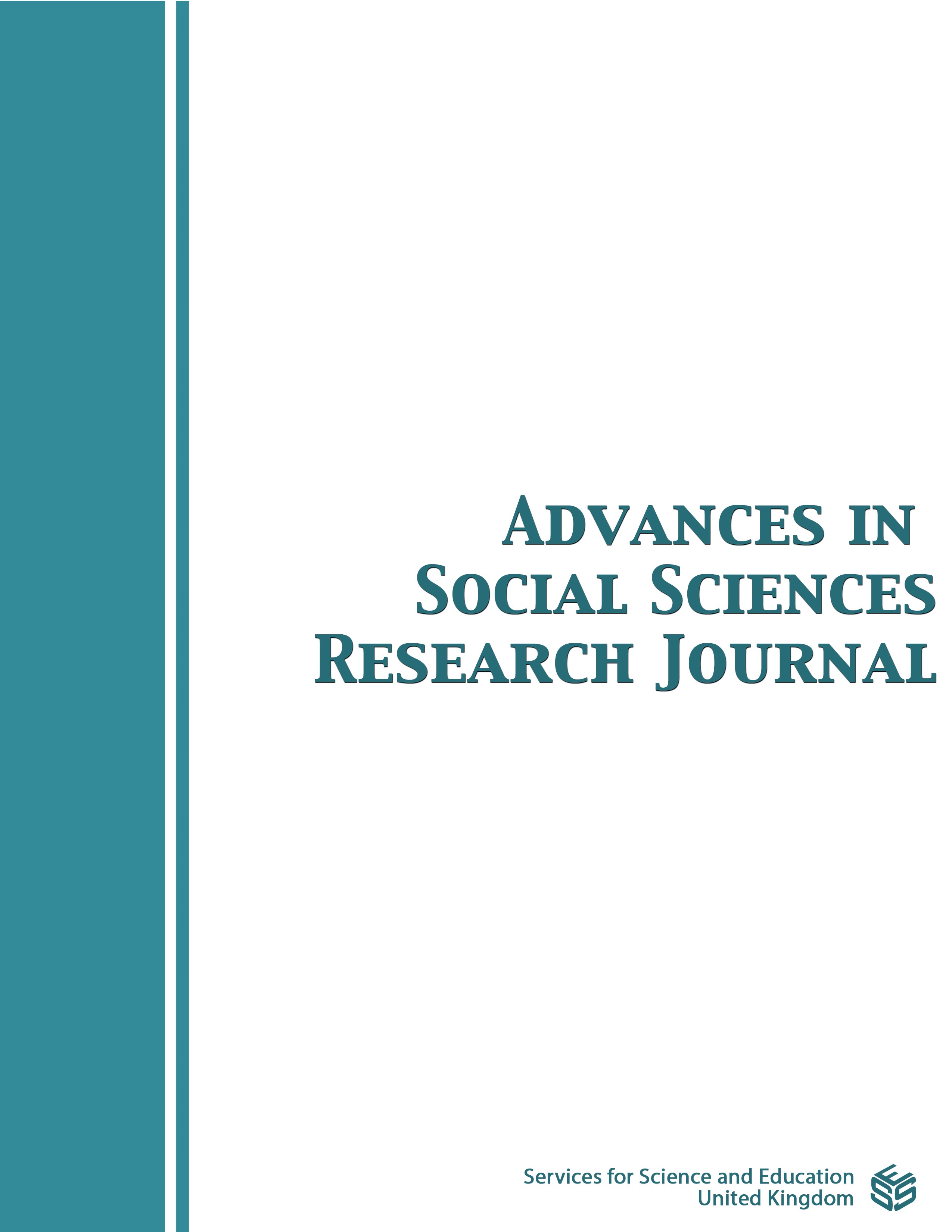Analyzing the Effect of Exposure to COVID-19 Misinformation on Health Behaviors
DOI:
https://doi.org/10.14738/assrj.93.11934Keywords:
COVID-19, health misinformation, health behaviors, pro-health behaviors, anti-health behaviors, news consumption, surveyAbstract
American news media have become more diverse, siloed, and politically polarized in recent decades, leading Americans with increasingly varied news consumption patterns to receive disparate information. In addition, the accessibility of social media platforms to unreliable users has resulted in misinformation-sharing on many online platforms. This project aims to elucidate the origins of individuals’ COVID-19 pro- and anti-health behaviors — particularly in the context of their news and information consumption — by investigating relationships between self-reported exposure to true and false statements about COVID-19, belief in such statements, and COVID-19 pro- and anti-health behaviors. Furthermore, the effects of primary news sources, time spent on social media, and demographics on these variables were analyzed. COVID-19 statements were drawn from the C.D.C., W.H.O., and public polls by Pew Research Center. To collect data, a 27-question survey was distributed to 250 panelists from the general U.S. population. Relationships between pairs of variables were analyzed using chi-square tests, which showed that exposure to COVID-19 statements had a significant (P < 0.05) effect on belief in statements, exposure to true statements had a significant effect on COVID-19 health behavior scores, and belief in statements had a significant effect on health behavior scores. In addition, time spent on social media, age, and political affiliation, had significant effects on these variables. This project adds to the growing body of research on the effects of information sources on health behaviors and sheds light on the genesis of COVID-19 pro- and anti-health behaviors.
References
Hindman, D. B., & Wiegand, K. B. (1970, January 01). The Big Three's Prime-Time Decline: A Technological and Social Context: Semantic Scholar. Retrieved December 15, 2020, from https://www.semanticscholar.org/paper/The-Big-Three's-Prime-Time-Decline:-A-Technological-Hindman-Wiegand/14d01ee38c8639c5e4508e38811862d533f41b1c.
Encyclopedia of Communication and Information (16 Oct. 2020). Cable Television, History of. Retrieved December 15, 2020, from https://www.encyclopedia.com/media/encyclopedias-almanacs-transcripts-and-maps/cable-television-history.
Grieco, E. (2020, August 18). Americans' main sources for political news vary by party and age. Retrieved December 15, 2020, from https://www.pewresearch.org/fact-tank/2020/04/01/americans-main-sources-for-political-news-vary-by-party-and-age/.
Chou, W. S. (2018). Addressing Health-Related Misinformation on Social Media. Retrieved December 15, 2020, from https://jamanetwork.com/journals/jama/article-abstract/2715795
Chou, W. S., Gaysynsky, A., & Cappella, J. (2020, October). Where We Go From Here: Health Misinformation on Social Media. Retrieved December 12, 2020, from https://www.ncbi.nlm.nih.gov/pmc/articles/PMC7532328/.
Oliver, J. Eric. (2014, May 01). Medical Conspiracy Theories and Health Behaviors. Retrieved December 12, 2020, from https://jamanetwork.com/article.aspx?doi=10.1001%2Fjamainternmed.2014.190.
Earnshaw, Valerie A, et al. (2016) Medical Mistrust in the Context of Ebola: Implications for Intended Care-Seeking and Quarantine Policy Support in the United States. Journal of Health Psychology, U.S. National Library of Medicine, 1 June 2016. Retrieved December 12, 2020, from https://journals.sagepub.com/doi/10.1177/1359105316650507.
Earnshaw, Valerie A., Eaton, Lisa A., Kalichman, Seth C., Brousseau, Natalie M., Hill, Carly E. Fox, Annie B. (2020). COVID-19 conspiracy beliefs, health behaviors, and policy support, Translational Behavioral Medicine, Volume 10, Issue 4, August 2020, Pages 850–856. Retrieved December 12, 2020, from https://doi.org/10.1093/tbm/ibaa090
Mitchell, A. (2020, August 27). Americans Who Mainly Get Their News on Social Media Are Less Engaged, Less Knowledgeable. Retrieved January 27, 2021, from https://www.journalism.org/2020/07/30/americans-who-mainly-get-their-news-on-social-media-are-less-engaged-less-knowledgeable/
Misachi, J. (2017, August 01). The 10 Most Popular Daily Newspapers In The United States. Retrieved January 27, 2021, from https://www.worldatlas.com/articles/the-10-most-popular-daily-newspapers-in-the-united-states.html
Top 10 Political Magazines. (n.d.). Retrieved January 27, 2021, from https://www.allyoucanread.com/top-10-political-magazines/
The most popular radio programs/podcasts in America: Media: YouGov Ratings. (n.d.). Retrieved January 27, 2021, from https://today.yougov.com/ratings/media/popularity/radio-programs-podcasts/all
Stoll, J. (2021, January 13). Most watched TV networks in the U.S. 2019. Retrieved January 27, 2021, from https://www.statista.com/statistics/530119/tv-networks-viewers-usa/
Harvard, R. (2021, January 08). Basic Cable Channels and Package Guide 2021. Retrieved January 27, 2021, from https://www.cabletv.com/blog/basic-cable-channels-resource
CDC (2019). What you should know about COVID-19 to protect yourself and others https://www.cdc.gov/coronavirus/2019-ncov/downloads/2019-ncov-factsheet.pdf
COVID-19 Mythbusters. (2020, November 23). Retrieved January 07, 2021, from https://www.who.int/emergencies/diseases/novel-coronavirus-2019/advice-for-public/myth-busters
Dobronte, A. (2016, December 08). Pitfalls of "don't know/no opinion" answer options in surveys. Retrieved March 07, 2021, from https://www.checkmarket.com/blog/dont-know-no-opinion-answer-option/.
Kramer, S. (2020, October 20). More Americans say they are regularly wearing masks in stores and other businesses. Retrieved December 15, 2020, from https://www.pewresearch.org/fact-tank/2020/08/27/more-americans-say-they-are-regularly-wearing-masks-in-stores-and-other-businesses/
Demographic segmentation made easy with Surveymonkey audience. (n.d.). Retrieved March 07, 2021, from https://www.surveymonkey.com/curiosity/demographic-segmentation-made-easy-surveymonkey-audience/.
Buying responses with surveymonkey audience. (n.d.). Retrieved March 07, 2021, from https://help.surveymonkey.com/articles/en_US/kb/SurveyMonkey-Audience#Demographic
Countering False Information on Social Media in Disasters and Emergencies, March 2018. (n.d.). Retrieved December 11, 2020, from https://www.dhs.gov/sites/default/files/publications/SMWG_Countering-False-Info-Social-Media-Disasters-Emergencies_Mar2018-508.pdf
Downloads
Published
How to Cite
Issue
Section
License
Copyright (c) 2022 Meiling Laurence, Olivia Platt, Valerie A. Earnshaw

This work is licensed under a Creative Commons Attribution 4.0 International License.
Authors wishing to include figures, tables, or text passages that have already been published elsewhere are required to obtain permission from the copyright owner(s) for both the print and online format and to include evidence that such permission has been granted when submitting their papers. Any material received without such evidence will be assumed to originate from the authors.






